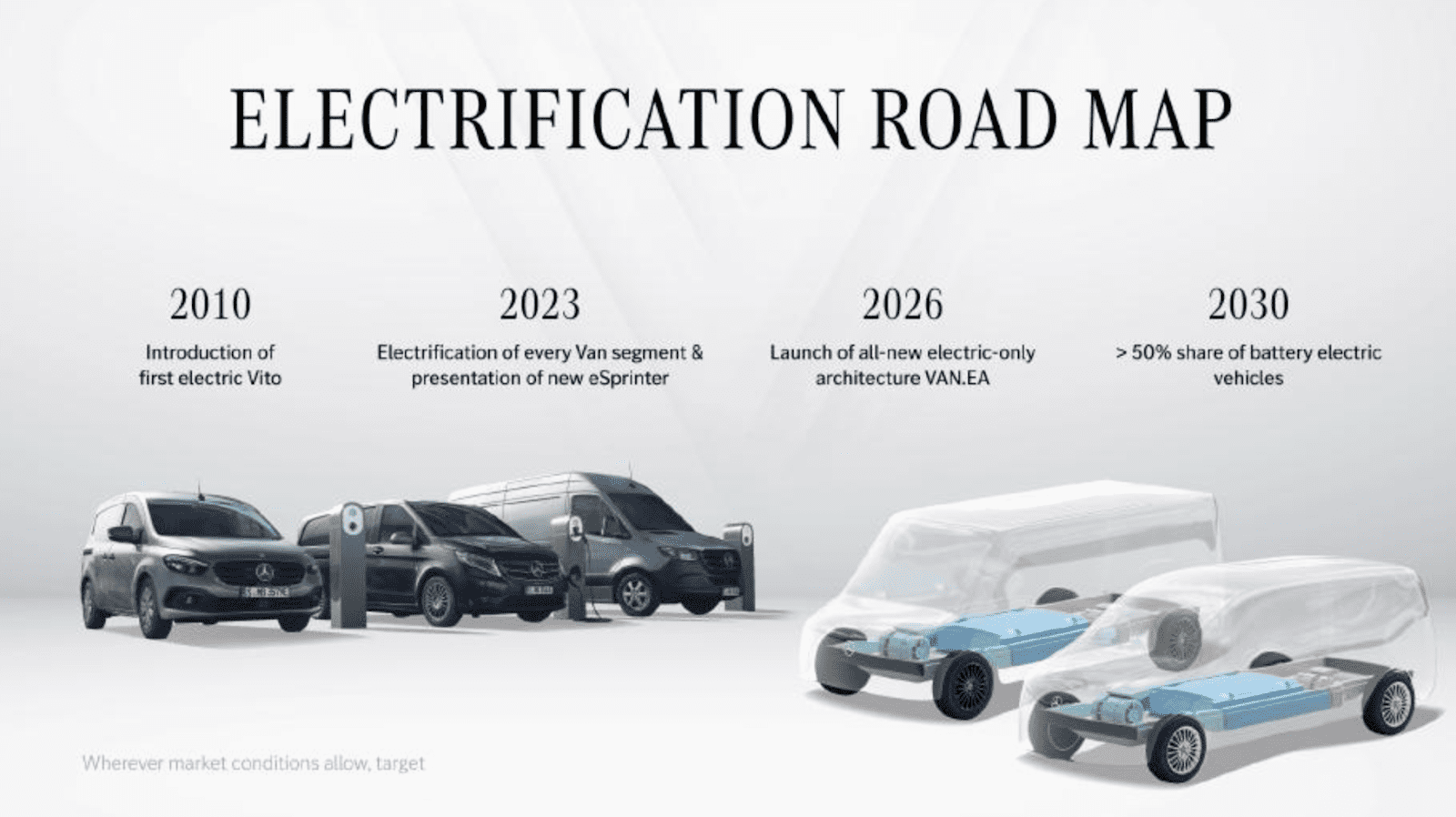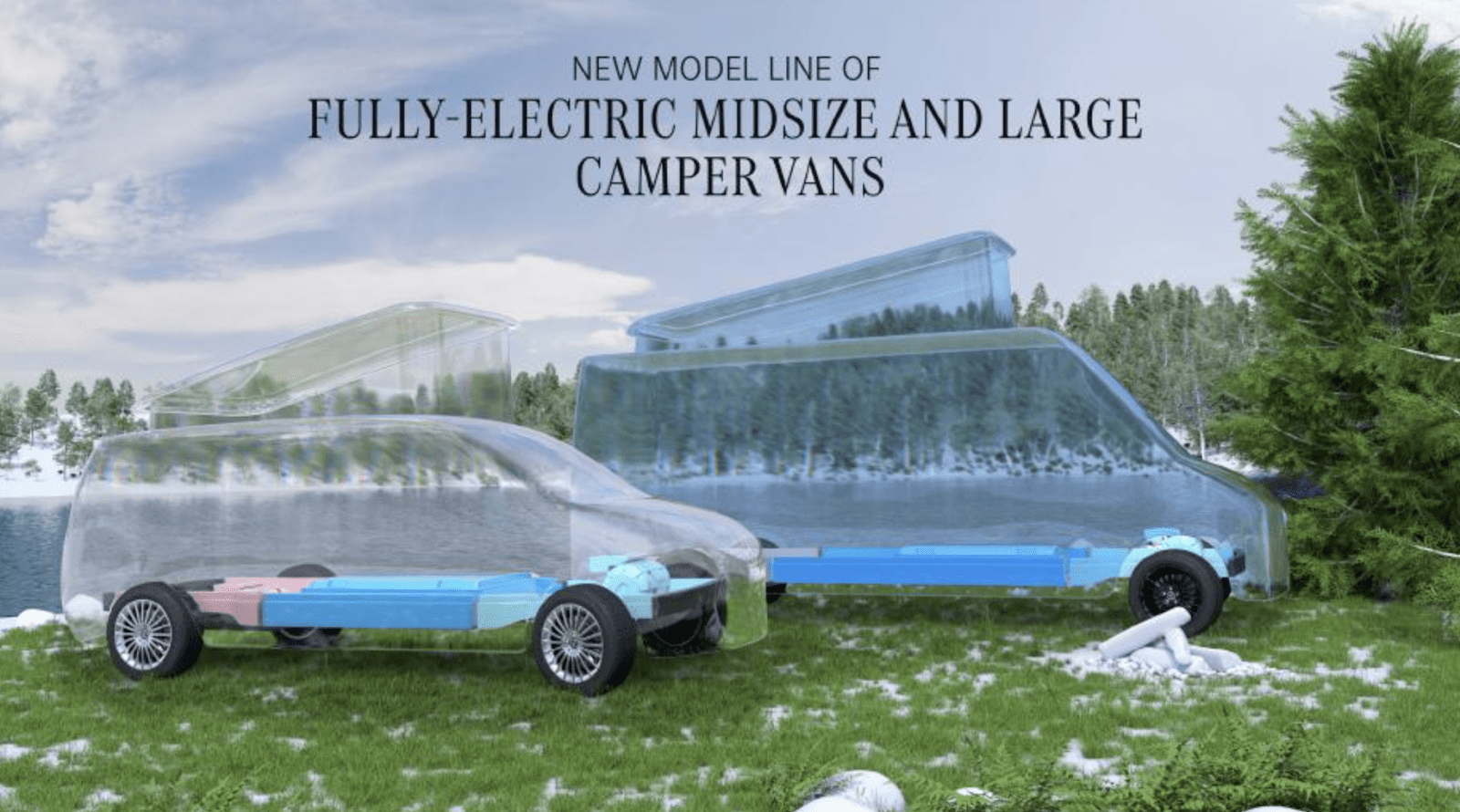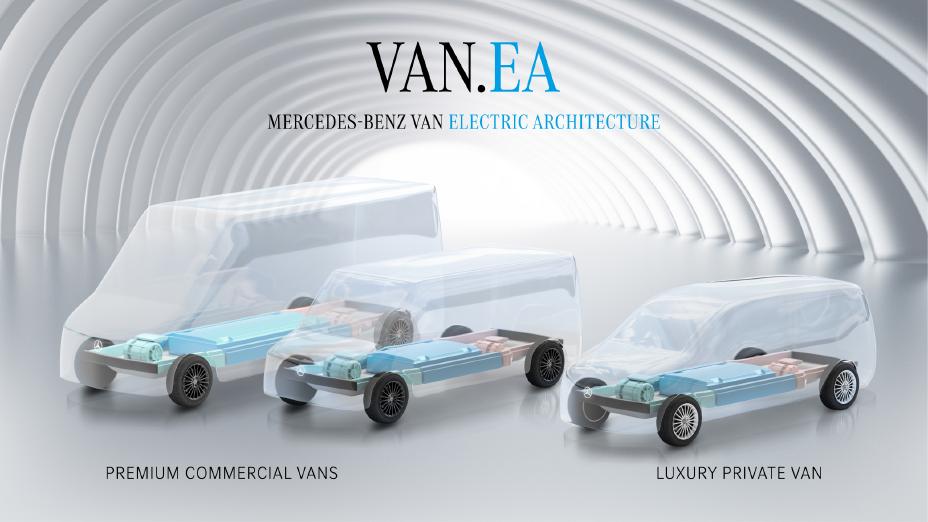Mercedes-Benz is a global supplier of high-efficiency work vans. You’ve seen the Sprinter models that deliver Amazon packages and are used for contracting and construction and, in some instances, as recreational vehicles.
With the push toward electric vehicles (EVs), Mercedes has decided these vans need to be produced faster to keep up with emission reduction goals. On May 16, the German manufacturer announced plans to introduce new midsize luxury electric versions. This announcement includes commercial vans and RVs.
The Van Electric Architecture (VAN.EA) platform is another step in Mercedes’ plans for large-scale deployment of EVs.
It uses the same components and modules in a platform style, allowing the van chassis to be placed over the platform. Midsize and bigger models are expected to be created by 2026.
This move aligns with the company’s goal of deploying 20% electric vans by 2026 and 50% by 2030. The U.S. and China are two of the biggest markets for Mercedes vans, with Europe currently being the biggest.

Photo Courtesy Mercedes-Benz
“According to the ‘electric-only’ strategy, VAN.EA is developed from scratch as
a purpose-built electric vehicle, fully leveraging the advantages of the new technology,” said Andreas Zygan, head of Mercedes-Benz vans development, in the company’s official release. “Our target of more than 50% BEV share by 2030 goes hand in hand with a significant reduction in CO2 emissions across the entire lifecycle of new vans.”
VAN.EA’s modular capabilities will have a range of body styles and design features. There are three modular blocks:
- The front contains the powertrain and front axle.
- The center is differentiated to accommodate the batteries.
- The rear includes an electric motor for all-wheel drive.
This standardized platform is the core difference between models.
The company aims to impress with the range of these vans. Reportedly, they will have an estimated range of 310 miles, making them suitable for long-distance travel. There will even be automated driving features that come standard in the luxury private vans and high-end commercial ones. It’s perfect for all types of activities and businesses.
Mercedes believes these vans can be used as ambulances, grocery delivery, municipal vehicles, box trucks, parcel delivery, and even recreational vehicles. They are highly customizable and can be tailored to meet all workspace demands.
These new long-range, customizable midsize vans are opening doors to new customers. Mercedes touted dedicated EV platforms as far back as 2021, with many expected to hit production lines in 2025.
VAN.EA aims to break into new markets in the U.S., especially the outdoor leisure sector. The carmaker hopes to see increased eVan sales by 2030 stateside. It’s the first time the company will offer a privately-positioned midsize luxury van in America.

Photo Courtesy Mercedes-Benz
The company will also assemble the vehicles using clean energy. Mercedes’ production plant in Jawor, Poland, will be run by 100% renewables, such as solar, wind, biogas, and thermal energy.
“Starting 2026, we will introduce our purpose-built EV architecture VAN.EA. This enables us to consolidate our midsize and large vans down to only one architecture and significantly reduce the complexity of our product portfolio,” said Mathias Geisen, head of Mercedes-Benz Vans. “Maximum added value for customers with sustainable profitability at the same time: VAN.EA clearly underscores our aspiration to be ‘Lead in Electric.’”
Mercedes is also producing its eSprinter right here in America. A factory in North Charleston, SC, is expected to start fulfilling deliveries of the flagship van. They come in three battery sizes, with a range of 249 miles before the next charge. The batteries can go from 10% to 80% charge in about 42 minutes with fast-charging stations.





